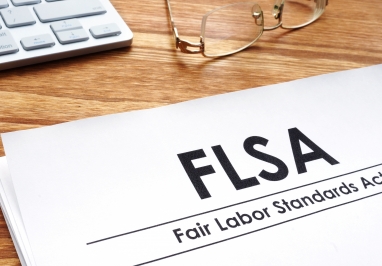
Last week, the U.S. Department of Labor (“DOL”) published a Final Rule on the analysis the DOL will use for classifying whether a worker is an “employee” or an “independent contractor” under the Fair Labor Standards Act (“FLSA”). The DOL also released Frequently Asked Questions (“FAQ”) regarding the Final Rule. We’ve highlighted some key points of the Final Rule and FAQs below.
Background
The FLSA generally requires covered employers to pay non-exempt employees at least minimum wage for all hours worked and at least one and one-half times the employee’s regular rate of pay for every hour worked over forty (40) in a workweek. However, the FLSA’s protections do not apply to independent contractors.
Historically, the DOL and courts have applied an economic reality test based on a totality-of-the-circumstances analysis to determine whether a worker is an employee or an independent contractor under the FLSA. Under the Trump administration, the DOL published a rule in January 2021 entitled “Independent Contractor Status Under the Fair Labor Standards Act” (“2021 Rule”). The 2021 Rule identified five economic reality factors to assess whether a worker should be properly classified as an employee or independent contractor. Two of those factors—the nature and degree of control over the work and the worker’s opportunity for profit or loss—were designated as “core factors,” meaning they would carry greater weight in the analysis. The 2021 Rule was scheduled to take effect on March 8, 2021. However, the incoming Biden administration delayed the effective date and then withdrew the 2021 Rule on May 6, 2021.
Substance of the Final Rule
In the Final Rule published on January 10, 2024, the DOL returns to a totality-of-the-circumstances analysis of the economic reality test in which the factors do not have a predetermined weight and are considered in view of the economic reality of the whole relationship. The DOL emphasized that a worker is not an independent contractor if they are, as matter of economic reality, economically dependent on an employer for work. Under the Final Rule, the DOL will consider the following six factors in determining whether a worker is an independent contractor or employee:
- Opportunity for profit or loss depending on managerial skill;
- Investments by the worker and the potential employer;
- Degree of permanence of the work relationship;
- Nature and degree of control;
- Extent to which the work performed is an integral part of the potential employer’s business; and
- Skill and initiative.
In addition to returning to a totality-of-circumstances analysis of the economic reality test, this Final Rule also returns to the longstanding framing of investment as its own separate factor, and the integral factor as one that looks to whether the work performed is an integral part of a potential employer's business rather than part of an integrated unit of production. The Final Rule also provides broader discussion of how scheduling, remote supervision, price setting, and the ability to work for others should be considered under the control factor, and it allows for consideration of reserved rights. Further, the Final Rule discusses exclusivity in the context of the permanency factor, and initiative in the context of the skill factor.
Next Steps
Absent a successful legal challenge, the Final Rule will take effect March 11, 2024. The Final Rule arguably provides greater opportunities for finding an employment relationship. Consequently, organizations that utilize independent contractors should review those classifications with their labor and employment attorneys to ensure compliance with the FLSA.
If you have any questions on this topic, please contact a member of our Labor & Employment Law Practice Group. We encourage you to subscribe to our Labor & Employment E-Briefs to keep up with the latest HR news, tips, and updates.
